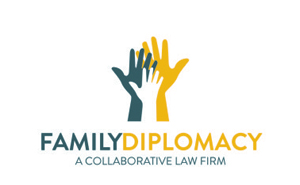Typical Steps in a Collaborative Divorce
Divorce is tough. Your marriage is falling apart and the foundation upon which you thought you could depend is no longer there. Rather than fling yourself into the chaotic and adversarial divorce court system, you have alternatives. One structured alternative is Collaborative Divorce.
In Collaborative Divorce, you and your spouse retain separate attorneys to guide you along the way. Unlike litigation lawyers, these attorneys’ only purpose is to help you reach an agreement as amicably and efficiently as possible. In fact, the process prohibits Collaborative Attorneys from engaging in contested court proceedings. Because of this, you do not have to worry about motion practice, depositions, or dirty trial tactics. You can just focus on reaching a resolution that is best for your future.
Here in Tampa Bay, a neutral Collaborative Facilitator usually aids you. The Facilitator has a specialty in communications, family dynamics, and childhood development. When you and your spouse seem to get stuck in the arguments of the past, the Facilitator will help get things back on track and focused on the future. Further, if you have children, the Facilitator will help you craft a parenting plan tailored to your children’s specific needs.
To ensure transparency, you may retain a neutral Financial Professional. The Financial Professional helps you and/or your spouse understand the extent of your estate. He or she will then help you develop options for best dividing it. He or she can also help you develop budgets so you know that you will have a financially sustainable future after divorce.
Every Collaborative Divorce is Different
Every Collaborative Divorce is different. However, as a trainer, many of my students (who are lawyers, financial professionals, mental health professionals, mediators, and others) find it helpful to have a step-by-step guide to Collaborative Divorce. This is meant only as a sample. The more Collaborative Cases I am involved with, the more they deviate from this guide; in truth, just as there is no “typical” family, there is no “typical” Collaborative Divorce.
Further, this guide contemplates that you are involved in the model of Collaborative Divorce described above, known as the “Neutral Facilitator” model or “One-Coach” model. This is the most common model used in Florida. There are other models of Collaborative Divorce, including the Attorney-Only model, the Two-Coach model, and the Collaborative Mediation model. This guide would not apply to any of these alternative models.
Step-by-Step Guide to Collaborative Divorce
- Initial Consultation with Client 1 and Client 1’s Attorney
- Initial Consultation with Client 2 and Client 2’s Attorney
- Team Prep Meeting
- Initial Professionals’ Phone Call
- Initial Meeting with Clients and Collaborative Facilitator (Either separately or together)
- Initial Meeting with Clients and Financial Professional (Either separately or together)
- Clients Meet separately with their Attorneys to Go Over Participation Agreement and Prepare for Meeting
- Team Phone Call Prior to Meeting
- Full Team Meeting #1 (Including prebrief and debrief)
- Financial Professional Compiles Data
- Joint Parenting Plan meetings with Collaborative Facilitator and Clients, if applicable
- Meeting between Clients and Respective Attorneys
- Team Phone Call Prior to Meeting
- Full Team Meeting #2 (Including prebrief and debrief)
- Attorneys drafting and working on documents
- Meeting between Clients and Respective Attorneys
- Joint Parenting Plan meeting with Collaborative Facilitator and Clients, if applicable
- Meeting with Financial Professional and Client 1 to review data, prepare/review financial affidavit, discuss budget, etc.
- Meeting with Financial Professional and Client 2 to review data, prepare/review financial affidavit, discuss budget, etc.
- Full Team Meeting #3 (Including prebrief and debrief)
- Attorneys drafting and working on documents
- Meeting with Attorneys and Respective Clients to review Collaborative Marital Resolution Agreement, Financial Affidavit, Schedule of Assets and Liabilities, and Parenting Plan
- Team Phone Call Prior to Meeting
- Final Full Team Meeting including signing of documents (Including prebrief and debrief)
- Final Hearing to Obtain Final Judgment of Dissolution of Marriage
Just a Guide
Again, this is simply a sample guide and may not accurately reflect your Collaborative Case, as each family’s circumstances are unique and so each process is unique. And you may not understand this guide. That’s okay, as we originally designed it for divorce professionals taking a two-day course.
Further, the guide does not reflect additional time for communication between professionals when issues need immediate attention or unexpectedly arise. Depending on the facts and circumstances of your family’s needs, your Collaborative Divorce may have more or less steps.
Yet, the point of this guide is to show you that there is a path. You will get through your divorce, and your Collaborative Team can create a safe vehicle to help you and your children do so. We will help you.
Adam B. Cordover is a founding member and principle trainer of the Tampa Bay Collaborative Trainers. He has taught professionals how to help families via the Collaborative Process throughout the U.S., Canada, and Israel. Additionally, Adam is co-author and co-editor of an American Bar Association book on Building A Successful Collaborative Family Law Practice (2018, with Forrest S. Mosten).





